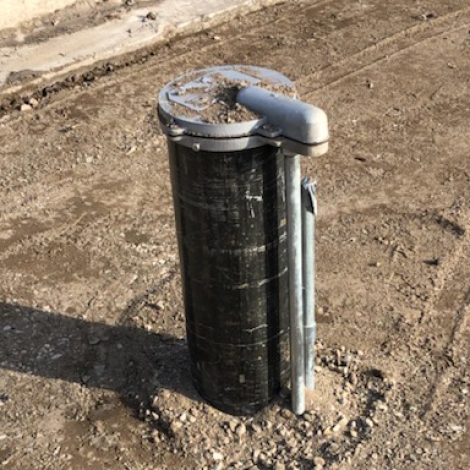A US clean energy startup is developing energy production systems that make geothermal technology more practical.
Traditional systems sink pipes deep underground to loop through depths that are warmer, or sometimes cooler, than the surface, depending on the season and location. A wide layer of our planet’s crust maintains a temperature of about 13°C (55°F) year round, starting at 1.5 meters (5ft) down. The ground can warm up to 20°C or 25°C (68-75°F) at about 300-400m (1000-1300ft) down. Shallow geothermal systems run fluid through closed loops of pipe to capture the heat underground, or dump heat into the ground. Heat conduction through plastic pipes is slow and the systems can require many loops of pipe in many boreholes to heat or cool a building.
Darcy Solutions has upgraded the concept by tapping into groundwater. Rather than sinking pipes into dry ground, the clean energy startup loops pipes through an aquifer. They add a heat exchanger to the pipe in the aquifer and speed the process of heat transfer. Their design is so efficient, each borehole with a Darcy system can do the work of 10 or 20 boreholes in a traditional system. They describe it like this:
“While traditional geothermal systems typically deliver 1 – 2 tons per borehole on average, each Darcy borehole can deliver 20 tons or more. As an example, a building that needs 200 tons of heating/cooling capacity may require 175-200 boreholes spaced every 15-20 feet on a grid. Using a Darcy system would likely require 8-10 boreholes spaced every 30 feet in a line.”
At the surface, Darcy couples the system with heat pumps, drawing on the temperature difference between the fluid in the loop system and the air near the ground to warm or cool the indoors. The technology reduces the footprint of geothermal systems and makes geothermal energy production possible in areas where traditional systems will not work.
Darcy emerged from Dr. Jimmy Randolph’s hydrogeology research when he was working at the University of Minnesota. Dr. Randolph co-founded the venture and serves as CTO. The name is an homage to a the 19th century French hydrologist, Henry D’arcy.
Now Darcy has installed three systems and plans to build 10-15 more this year.
“We’re focused on commercial and industrial markets, so we measure scale based on HVAC system tonnage. With these additional installations we’ll have over 1,000 tons of installed system capacity,” Brian Larson, Co-Founder and CEO told E4C by email.
Early on, Darcy took part in Innovation Incubator, an accelerator supported by Wells Fargo and the US National Renewable Energy Laboratory that boosts cleantech startups.
“NREL has been collaborating with geologists from Darcy and providing buildings/HVAC-related expertise. NREL has worked on modeling the ground source heat pump system, as well as the buildings these systems would serve, and calibrating to data from an existing installation. The team also developed a methodology for Darcy to use in evaluating further potential installations,” says Lauren Magin, the startup portfolio manager at NREL.
Next steps are to scale up production.
“We’ll continue to build out our presence in our local market, and we’re currently working to expand our geographic presence throughout the upper Midwest,” Mr. Larson says.
Darcy is one of the Promising Prototypes to Watch in 2023. Read about them at the link.

